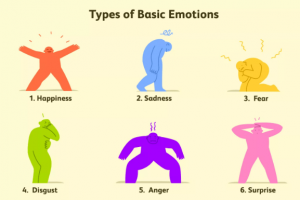
We all want the same thing when it come to email marketing—a high engagement with our subscribers and to eventually turn this engagement into better leads and sales opportunities. But the question is, how can we perfect our emails to increase our engagement?
One major way to increase engagement is through email content. Making your email content fun, engaging, and relative will certainly increase subscriber engagement. But what about some of the more technical and strategic aspects of emails?
Below are three simple email tests to keep in mind before launching your next marketing campaign.
Determining The Perfect Time
There is a plethora of articles out there related to sending an email at the perfect time. Searching for “determining the best time for an email send” will kick back 40,000,100 results. Some posts even offer exact times you should send your next email based on industry and others offer out-dated information. There is one simple, yet sometimes overlooked, strategy to determining the best time to send an email to your database, though.
For one of our projects at Kuno, we were given the task of taking a seemingly cold list of customers and increasing participation in a simple survey. To accomplish this, we dug a little into basic email testing. We took the original list and broke it into groups of 50 to begin our testing. Originally we did every week day at five different times: 7 a.m., 10 a.m., 11 a.m., 2 p.m. and 3 p.m. After a week’s worth of testing, the clear winner was 2 p.m. The Open and Click Rates at this time were 22 percent and 4 percent respectively, which were significantly greater than the other four times.
Now that we had the best time, it was time to tackle the best day to send an email. Running the same style of testing, we sent the email to a small group every day at 2 p.m. Since this was a fewer amount of daily sends, we increased the list size and tested over two weeks. The results were staggering: Wednesday was clearly the best day almost doubling the open rate with 44 percent and a high open rate of 7 percent.
It was clear Wednesday at 2 p.m. was the best time and day for sending emails to this database. This may not be true for your database, though. It is important to test email sends for your target audience and industry to best determine the most opportune time and day for sending marketing emails.
Finding The Correct Language
Even with a beautifully written email, the smallest change can potentially perfect the language of an email.
While we were obtaining stellar results with this Customer Survey email campaign, we wanted to see if we could do even better. We decided to test some of our wording and see the result.
One area we A/B tested was the send name. We wanted to see if we changed the sender name to an employee’s name as opposed to a the company’s would it increase open rate. We tested over the course of the week, and the results supported our hypothesis: even though it was marginal, using the employee’s name increased open rate by 3 percent.
Then, with our open rate and sender name taken care of, we wanted to concentrate on our call to action. We wanted to change the language to express the ease of taking the survey. Instead of ‘Take the Survey,’ we determined ‘Take the 15-Second Survey’ would express how easy the survey was and increase click rates. Over a week of testing, this proved to be the case — tripling our click rate.
This goes to show it’s all about the right language—adding something as simple as a familiar name or descriptive phrase can help boost your marketing efforts.
Testing Your Email’s Appearance
Just like content, the design incorporated into your email can enhance your stats, as well. A beautifully designed email can be the one thing that sets you apart from the hundreds of email people receive every day. But with so many different email platforms and devices, including mobile, how do you make sure it will display correctly in all of them?
Luckily, there are plenty of great display testing softwares out there, including Litmus and Email on Acid, that can do this for you in a matter of minutes. These services can help you identify display and development problems you might not have seen if you didn’t have access to a certain platform. By sending a test email or uploading your email’s code, you can see what your email looks like on iPhone or Android, Mac Mail or Outlook, and even Yahoo! Mail or Gmail in different browsers, giving you the peace of mind your email will look great no matter what platform your contacts use.
These tests may sound like a lot of work, but with the potential for healthy email marketing ROI, don’t you want to make sure you are delivering your contacts the best possible communications? Apply some of these tests to your next campaign, and share your results in the comments below!
(291)






